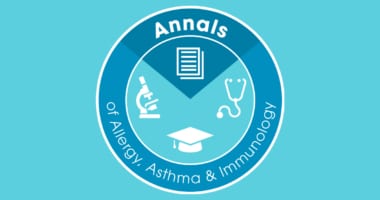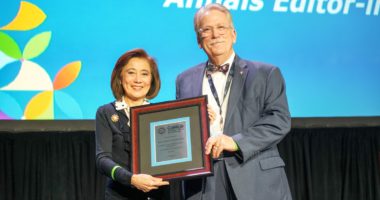 I hope your winter hasn’t been too harsh so far. The midsouth of the United States is having a milder than usual season, but there is still a great deal of moisture. Such days offer opportunities for a little inside time for reading. I can think of no better reading material than the Annals of Allergy, Asthma & Immunology. I’d like to suggest a few articles for your reading and educational pleasure. An absolute “must read” is the latest idiopathic anaphylaxis yardstick, which is focused on practical recommendations for clinical practice. This series has been very popular among readers, as it is a succinct overview of the specific disease with focused approaches to diagnostic and therapeutic challenges. The choices among approved biologics for asthma are multiple, yet it is still unclear which biologic is best for which patient. The clinical trials that proved the efficacy and safety of these biologics were often similar in their inclusion criteria, study designs, and endpoints. Many of these trials have been reanalyzed post hoc to identify subsets of subjects considered to be so-called “enhanced responders.” This has actually added to the confusion about selecting the appropriate biologic for difficult-to-control asthma patients. This review summarizes and compares trial designs, patient cohorts and study results of the major trials involving these therapies.
I hope your winter hasn’t been too harsh so far. The midsouth of the United States is having a milder than usual season, but there is still a great deal of moisture. Such days offer opportunities for a little inside time for reading. I can think of no better reading material than the Annals of Allergy, Asthma & Immunology. I’d like to suggest a few articles for your reading and educational pleasure. An absolute “must read” is the latest idiopathic anaphylaxis yardstick, which is focused on practical recommendations for clinical practice. This series has been very popular among readers, as it is a succinct overview of the specific disease with focused approaches to diagnostic and therapeutic challenges. The choices among approved biologics for asthma are multiple, yet it is still unclear which biologic is best for which patient. The clinical trials that proved the efficacy and safety of these biologics were often similar in their inclusion criteria, study designs, and endpoints. Many of these trials have been reanalyzed post hoc to identify subsets of subjects considered to be so-called “enhanced responders.” This has actually added to the confusion about selecting the appropriate biologic for difficult-to-control asthma patients. This review summarizes and compares trial designs, patient cohorts and study results of the major trials involving these therapies.
I want to emphasize our Letters section of the journal. In this month’s issue there are 14 letters addressing topics as diverse as drug anaphylaxis, environmental influences on manifestations of allergic gastrointestinal disease, and therapeutic responses to biologics in patients with an unusual mast cell-based illness (hereditary alpha tryptasemia). This section is brief, yet power-packed with information that you can read all at once or in snippets that take only a few minutes each.
As we look to the spring allergy season, I hope each of you will continue to support us by reading the articles and offering feedback as to what is (and is not) useful to you in the care of our patients.
Gailen D. Marshall, Jr., MD PhD FACAAI
Editor-in-chief

